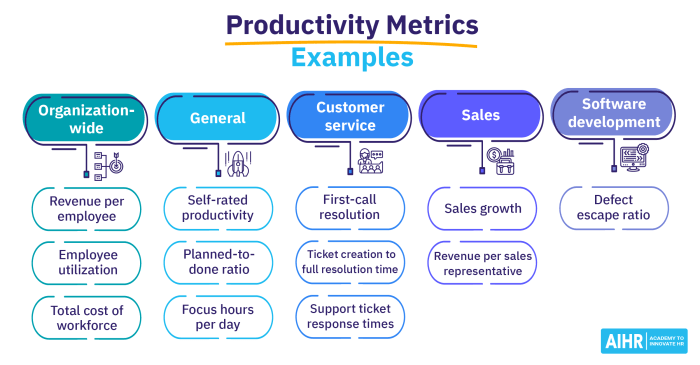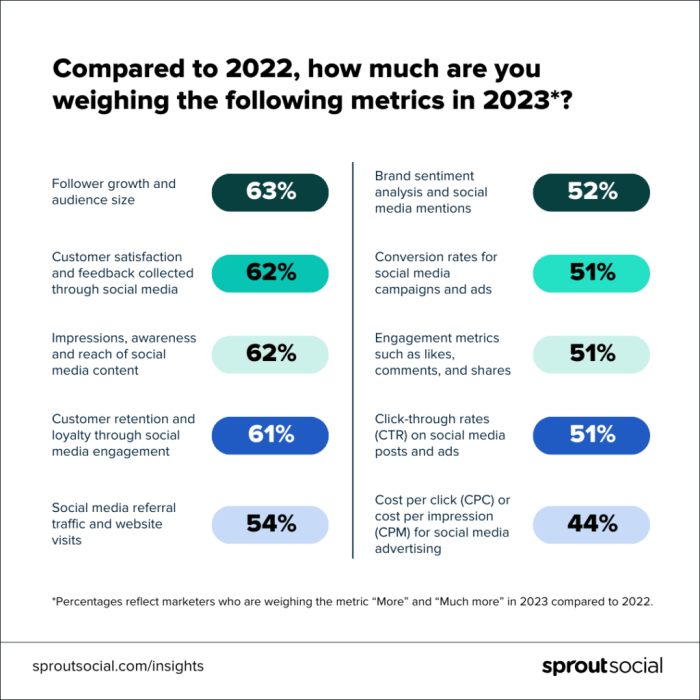Understanding Customer Feedback Metrics dives into the world of customer insights, shedding light on how businesses can leverage data to drive growth and success. From Net Promoter Score to Customer Satisfaction Score, this article breaks down key metrics in a fresh and engaging manner.
Get ready to explore the realm of customer feedback metrics and discover the hidden gems that can transform your business strategies.
Importance of Customer Feedback Metrics

Understanding customer feedback metrics is essential for businesses in order to gauge customer satisfaction, identify areas for improvement, and make data-driven decisions.
Impact on Decision-Making
- Customer feedback metrics, such as Net Promoter Score (NPS) or Customer Satisfaction Score (CSAT), provide valuable insights into customer preferences and pain points, helping businesses prioritize strategic initiatives.
- By analyzing feedback metrics, companies can identify trends and patterns in customer behavior, enabling them to tailor products or services to meet customer needs effectively.
Benefits of Analyzing Metrics
- Improved Customer Experience: By listening to customer feedback, businesses can enhance their overall customer experience, leading to increased loyalty and retention.
- Product Development: Customer feedback metrics can guide product development efforts by highlighting areas where enhancements are needed or new features can be introduced.
- Competitive Advantage: Utilizing customer feedback metrics allows companies to stay ahead of competitors by continuously evolving based on customer preferences and feedback.
Key Customer Feedback Metrics: Understanding Customer Feedback Metrics
Customer feedback metrics are essential tools for businesses to understand customer sentiments and improve overall customer experience. Let’s explore some common customer feedback metrics and their significance in assessing customer loyalty, satisfaction, and experience.
Net Promoter Score (NPS)
The Net Promoter Score (NPS) is a metric used to measure customer loyalty by asking customers how likely they are to recommend the company to others. Customers are categorized into Promoters, Passives, and Detractors based on their responses. NPS helps businesses identify brand advocates and areas for improvement.
Customer Satisfaction Score (CSAT), Understanding Customer Feedback Metrics
Customer Satisfaction Score (CSAT) measures how satisfied customers are with a specific interaction, product, or service. Customers are typically asked to rate their satisfaction on a scale. CSAT provides immediate feedback on customer experiences and helps in identifying areas for enhancement.
Customer Effort Score (CES)
Customer Effort Score (CES) measures the ease of doing business with a company. Customers are asked how easy it was to resolve an issue or complete a transaction. Lower effort scores indicate higher customer satisfaction and loyalty. CES helps in streamlining processes and improving overall customer experience.
These customer feedback metrics play a crucial role in helping businesses understand customer sentiments, identify areas for improvement, and enhance overall customer satisfaction and loyalty.
Methods for Collecting Customer Feedback

When it comes to gathering customer feedback, businesses have a variety of methods at their disposal to ensure they are hearing the voices of their customers. Each method has its own strengths and weaknesses, so it’s important to choose the right approach based on your specific goals and target audience.
Surveys
Surveys are a common way to collect customer feedback, whether through email, online forms, or even in-person. They allow businesses to ask specific questions and gather quantitative data that can be easily analyzed for trends and patterns.
Interviews
Interviews provide a more in-depth look at customer opinions and experiences. By engaging in one-on-one conversations, businesses can uncover valuable insights that may not come to light through other methods. However, interviews can be time-consuming and may not always be feasible for large-scale feedback collection.
Social Media Monitoring
Monitoring social media platforms allows businesses to track what customers are saying about their brand in real-time. This method provides immediate feedback and insights into customer sentiment, but it can be challenging to sift through the noise and determine which comments are most relevant.
Feedback Forms
Feedback forms, whether on websites, apps, or in-store, provide a structured way for customers to share their thoughts and opinions. They are easy to implement and can be tailored to gather specific types of feedback, but they may not always capture the full range of customer sentiments.
Leveraging Technology
Businesses can leverage technology to streamline the process of collecting and analyzing customer feedback. This includes using tools like sentiment analysis software, customer feedback management platforms, and data visualization tools to gain deeper insights and make data-driven decisions based on customer feedback.
Interpreting Customer Feedback Metrics
When it comes to interpreting customer feedback metrics, accuracy is key. Understanding what the data is telling you is crucial for making informed decisions to improve your products or services.
Significance of Trends, Patterns, and Outliers
Examining trends, patterns, and outliers in customer feedback data analysis can provide valuable insights into customer behavior and preferences. By identifying recurring trends or patterns, you can pinpoint areas of improvement or strengths to capitalize on. Additionally, outliers can highlight unusual or extreme customer experiences that may require immediate attention.
Best Practices for Deriving Actionable Insights
When deriving actionable insights from customer feedback metrics, it’s essential to focus on concrete actions that can drive positive change. Some best practices include:
- Segmenting feedback data to identify specific customer groups or demographics with unique needs.
- Comparing feedback metrics over time to track improvements or declines in customer satisfaction.
- Utilizing sentiment analysis tools to gauge the overall sentiment behind customer feedback.
- Combining quantitative metrics with qualitative feedback for a comprehensive understanding of customer perceptions.
- Acting promptly on critical feedback to show customers that their opinions are valued and addressed.






